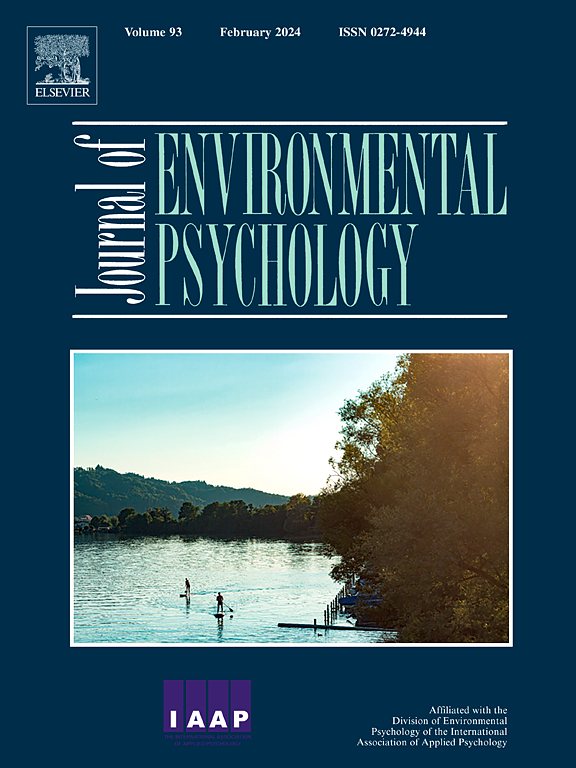Perceived neighborhood disorder and fear of crime in Japan: A multilevel analysis of repeated cross-sectional data from 2007 to 2018
IF 7
1区 心理学
Q1 ENVIRONMENTAL STUDIES
引用次数: 0
Abstract
The social and physical environment has been shown to influence the fear of crime. Little is currently known about the relationship between perceived neighborhood disorder and fear of crime in Japan. Combining census data with responses to four sweeps of a national public safety survey, this study explored individual-, household- and neighborhood-level predictors of fear of property crime in Japan. Consistent with theoretical expectations, multilevel models found that being the victim of crime, living in larger cities, and perceived higher levels of social disorder were associated with higher levels of fear of household property crime. Our findings underline the importance of addressing (perceived) neighborhood disorder in efforts to improve feelings of safety and security.
感知邻里混乱与日本犯罪恐惧:2007年至2018年重复横截面数据的多层次分析
社会和自然环境已被证明会影响对犯罪的恐惧。在日本,人们对邻里混乱和犯罪恐惧之间的关系知之甚少。结合人口普查数据和对四次全国公共安全调查的回应,这项研究探索了日本个人、家庭和社区层面对财产犯罪恐惧的预测因素。与理论预期一致,多层次模型发现,作为犯罪的受害者,生活在大城市,社会混乱程度较高,对家庭财产犯罪的恐惧程度较高。我们的研究结果强调了解决(感知到的)邻里混乱在提高安全感方面的重要性。
本文章由计算机程序翻译,如有差异,请以英文原文为准。
求助全文
约1分钟内获得全文
求助全文
来源期刊

Journal of Environmental Psychology
Multiple-
CiteScore
10.60
自引率
8.70%
发文量
140
审稿时长
62 days
期刊介绍:
The Journal of Environmental Psychology is the premier journal in the field, serving individuals in a wide range of disciplines who have an interest in the scientific study of the transactions and interrelationships between people and their surroundings (including built, social, natural and virtual environments, the use and abuse of nature and natural resources, and sustainability-related behavior). The journal publishes internationally contributed empirical studies and reviews of research on these topics that advance new insights. As an important forum for the field, the journal publishes some of the most influential papers in the discipline that reflect the scientific development of environmental psychology. Contributions on theoretical, methodological, and practical aspects of all human-environment interactions are welcome, along with innovative or interdisciplinary approaches that have a psychological emphasis. Research areas include: •Psychological and behavioral aspects of people and nature •Cognitive mapping, spatial cognition and wayfinding •Ecological consequences of human actions •Theories of place, place attachment, and place identity •Environmental risks and hazards: perception, behavior, and management •Perception and evaluation of buildings and natural landscapes •Effects of physical and natural settings on human cognition and health •Theories of proenvironmental behavior, norms, attitudes, and personality •Psychology of sustainability and climate change •Psychological aspects of resource management and crises •Social use of space: crowding, privacy, territoriality, personal space •Design of, and experiences related to, the physical aspects of workplaces, schools, residences, public buildings and public space
 求助内容:
求助内容: 应助结果提醒方式:
应助结果提醒方式:


